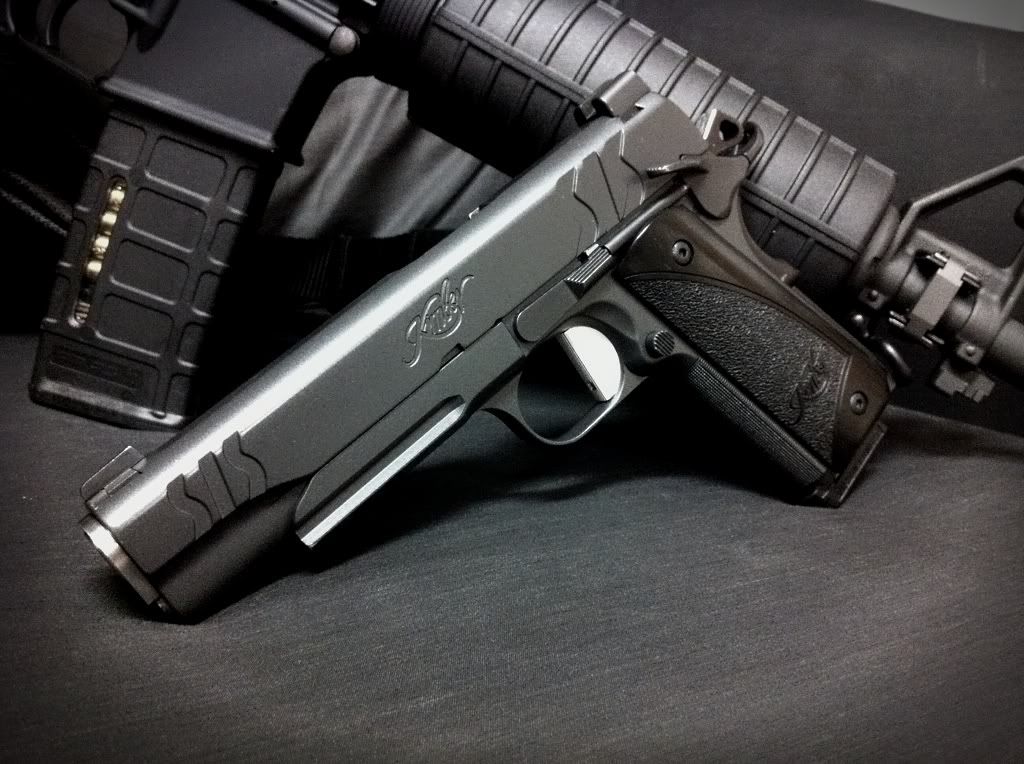Q: "What is the difference between single action and double action handguns?"
A: Single and double action refers to the number of actions the trigger performs. There are many variations in handgun designs but in short it goes like this: In a single action gun with an exposed hammer such as a Colt Single Action Army, the hammer must be cocked before the gun can be fired. The trigger is only responsible for releasing the hammer, while the shooter is responsible for re-cocking it before each round can be fired. In a double action gun such as the Smith and Wesson Model 10 the trigger normally performs two actions. As you pull the trigger, the first 80% or more of pull will bring the hammer back before allowing it to fall right at the end of the pull. Most double action revolvers with an exposed hammer are capable of being fired single action as well by pulling the hammer back as you would with a single action gun. This affords the shooter a much shorter and lighter trigger pull.
Q: "What is a magazine disconnect safety and why would I want one?"
A: A magazine disconnect is a "safety feature" built into a firearm that prevents the firearm from being fired if there is no magazine inserted. This was done in an effort to reduce the amount of accidental or negligent discharges. In a semi automatic pistol, ammunition is fed from a detachable magazine into the chamber of the gun one round at a time. If you remove the magazine from a loaded pistol with a round in the chamber, the firearm is still loaded. The magazine disconnect prevents the gun from being discharged in this situation. This is an unnecessary addition to a firearm and adds even more parts to complicate the gun. If I need to defend myself with a firearm and the magazine gets released somewhere along the way, I would rather have one bullet than none at all. On top of that, this sort of thing places too much reliance on the gun being somehow responsible for preventing us from shooting ourselves or someone else. This goes against the basic rules and gives you a "safety net" that you shouldn't need or have. If you know how to properly clear a firearm, keep your finger off the trigger and keep the gun pointed in a safe direction, you aren't going to discharge the gun. At absolutely no point should you be pulling the trigger of a gun you haven't fully made clear unless of course you intend to fire the gun.
If you have a question about firearms that you would like answered, email it to me at quietholestudio@earthlink.net or leave it in the comments. Stay safe.


